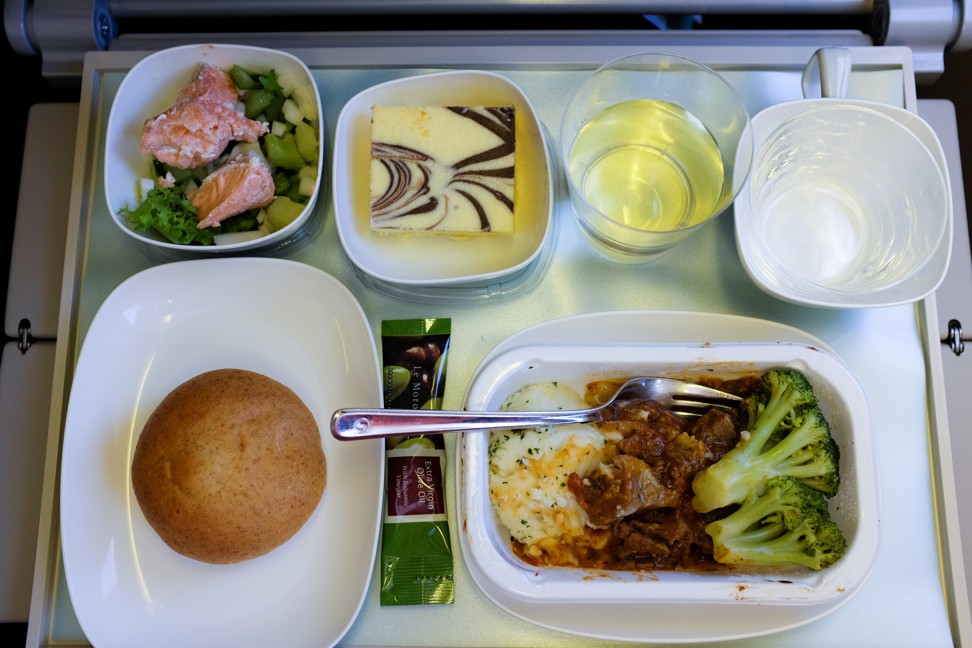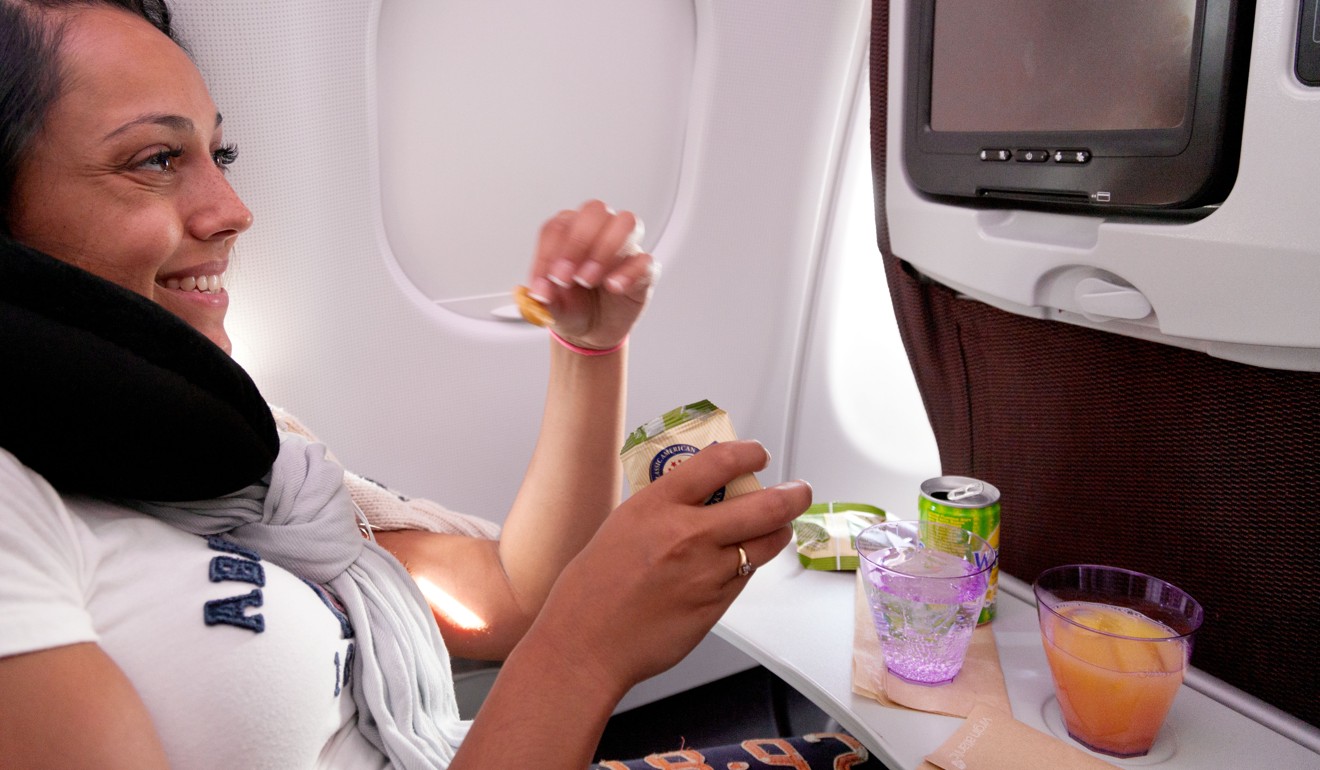
The future of aeroplane food: snacks and sustainability
- In-flight meals have continuously evolved since their inception in 1919 thanks to a competitive industry
- From Singapore Airlines to Emirates, airlines around the world are re-examining how food on a plane should taste and from where it is sourced
The rattle of a flight attendant’s service cart sparks a nostalgic joy in me. No matter how many times I fly, I perk up when those trolleys come rumbling down the aisle. What will the flight attendant hand me this time?
Not getting a meal at all is a possibility as well.
Today, you will not find a lot of food on most US domestic flights. If you do, you are likely to be paying for it, or it’s just a snack.

While many fliers complain about paying for food on planes, it is actually the way things were from the very beginning.
Passengers on Handley Page Transport’s repurposed World War I bombers from London to Paris in 1919 experienced the first in-flight meal. It was a pre-packaged lunchbox that cost roughly three shillings (the equivalent today of US$9.50).
Pan American World Airways (Pan Am) was also a leader in swanky in-flight food service.

One meal on a 1939 flight started with a tropical fruit cocktail, followed by cream of tomato soup, a half-grilled chicken with wine sauce, wax beans and Delmonico potatoes.
But the glory days of free-flowing champagne and canapés proved unsustainable. The in-flight experience took a turn with deregulation.

“Deregulation was the game-changer, because you had all these low-cost carriers coming in and starting to compete against the higher-class carriers,” says commercial airline historian Shea Oakley.
“Back in the old days, it was about the service. Now, people want speed,” says Enda Kavanagh, product manager for in-flight customer experience at Aer Lingus. While the Irish carrier had to speed up its service, it still offers complimentary meals in economy. This isn’t the norm in a post-deregulation world.
Airlines began to unbundle their services as a way to earn more revenue while keeping ticket prices competitive. If a meal did come your way, it was not a multi-course experience, but a small rectangle covered in aluminium foil.
For fresh herbs, you need more than double the ingredients to reach the same flavour you would get on ground level
The future of airline food may not be doomed, however. There are people working hard to make aeroplane food better.
If you’ve flown internationally on a major carrier, you’ve probably eaten a Gate Gourmet in-flight meal. Founded in Switzerland, Gate Gourmet is a catering company that services 700 million passengers annually, with some 200 locations in more than 60 countries.
According to Gate Gourmet general manager Jim Stathakes, there has been a shift in the airline catering industry, thanks to the competition among carriers.
“In the past 10 to 15 years, a lot of food has been removed from the economy class, especially domestically,” says Stathakes. “Now the airlines are starting to put food back in economy.”

Cooking for people is vastly different when they’re going to be eating that meal on an aeroplane. The lower pressure of an airline cabin wreaks havoc on the senses.
Lufthansa, Germany’s largest airline, learned this in 2010 after it commissioned a study from the Fraunhofer Institute for Building Physics to look at the science of in-flight dining.
“For fresh herbs, you need more than double the ingredients to reach the same flavour you would get on ground level,” says Lufthansa catering executive Ernst Derenthal. “Dry herbs do not work very well.”

Taste tests were conducted in a grounded plane inside a tent with pressure made to imitate an altitude of 10,000 feet (3,048 metres). Recipes were adjusted accordingly. They learned that certain ingredients translate easily from the ground to the air. Warm spices like cinnamon, cardamom and chilli showed no difference.
Cooking innovations are also happening before ingredients even get to the catering kitchen.
Near New Jersey’s Newark Liberty International Airport, AeroFarms is the world’s largest indoor vertical farm, a huge 70,000 sq ft (6,500 square metre) operation that can harvest up to two million pounds (900,000 kilograms) of produce per year.
Produce is grown in a fully controlled indoor facility using an aeroponic system that requires 95 per cent less water than field farming. Besides being more environmentally sustainable, the system speeds up harvest cycles and yields more safe and consistent crops.

Singapore Airlines launched a new “farm-to-plane” initiative using AeroFarms produce in its business-class offerings on the SQ21 Newark-to-Singapore route. The next step will be on the JFK-to-Singapore flights, followed by putting the produce in all cabin classes.
AeroFarms ingredients can be grown just in time for a flight, picked and prepared for flying.
Singapore Airlines is far from the only airline working on upping the ante on its plane food starting at farm level. Last year, Crop One Holdings partnered with Emirates Flight Catering to give AeroFarms a run for its money by announcing they would spend US$40 million to build the world’s largest vertical farming facility in Dubai.
Scandinavian Airlines sources organic, hand-picked ingredients from farms they can readily name, as well as other Scandinavian treats.
While the service may never generally return to what it was in air travel’s “glory days”, there are steps being taken to ensure the food served in the sky is both sustainable and delicious.

